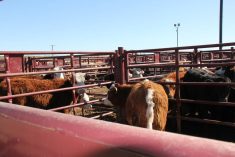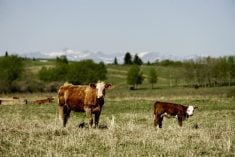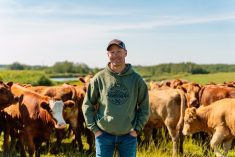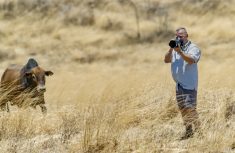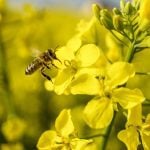[Update: December 9, 2023] Starting small is better than not starting at all, and first-generation rancher Danika Mayer knows that better than most. Without growing up with any direct connection to the beef industry, the enthusiastic Canadian Cattle Young Leaders program graduate has made many miles, carving out her place in the Canadian beef industry, in a short amount of time.
Growing up in rural eastern Ontario, near L’Orignal, Mayer’s early exposure to agriculture began through riding lessons, at a farm near where her family lived. A childhood friend’s involvement in 4-H sparked interest, and later, at age 16, she got involved herself and was hooked.
It didn’t take long for her to make connections with beef cattle producers in the area who offered her the chance to try her hand at showing cattle. John Jamieson, a neighbouring purebred producer and owner of Jamieson Genetics, provided Mayer with her initial experience with showing cattle. With a string of purebred Simmentals, they offered Mayer the opportunity to learn and show a few animals over her time in 4-H. Beyond 4-H, Expo Boeuf in 2015 was Mayer’s first exposure to cattle shows on a serious scale. Alongside the Jamiesons, Mayer got to see, first-hand, what a true show string looked like.
Read Also
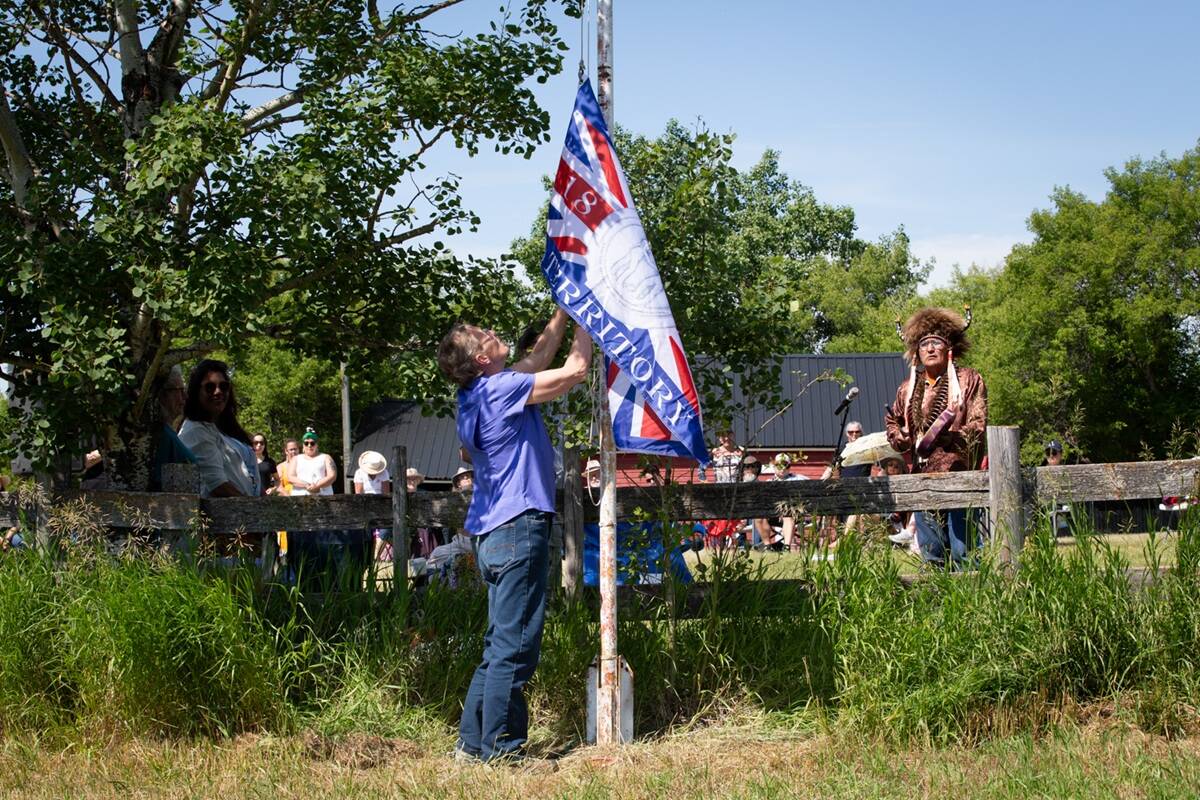
Treaty Land Sharing Network expands reach in Saskatchewan and Alberta
The Treaty Land Sharing Network, which connects land holders with First Nations and Metis people, has expanded since it began in 2018
After gaining experience on a larger, and increasingly professional scale, she was hooked. She set her sights on high-end Simmentals, and agriculture. Starting small, Mayer initially calved out four head with Jamieson Genetics, and has kept building her own herd. In 2024, she’ll calve out three cows of her own. Mayer’s enthusiasm for the industry is tangible.
Mayer’s love for animal agriculture is deeply rooted in the sense of responsibility she feels for those around her. Along with her ranching endeavours, she has worked as a registered practical nurse for the last five years. The parallels between caring for humans and livestock fill Mayer with purpose when interacting with her patients and her herd. Empathy for those counting on her was a very strong point of connection between Mayer and her mentor in the Canadian Cattle Young Leaders program.
Finding a mentorship match
Mayer was selected to participate in the Canadian Cattle Young Leaders program after the roundtable selections at the 2022 Canadian Beef Industry Conference in Penticton, B.C. The program offers 16 mentorships to individuals selected from the 24 semi-finalists each year. Those semi-finalists rise to the top from a pool that often exceeds 100 applicants, from across the country with varying backgrounds in the Canadian beef industry.
“The mentor who was selected for me was a near-perfect match,” Mayer says.
Mayer was paired with Sandra Vos, another Ontario-based nurse-turned-first generation rancher. Vos is currently based in Brant County, Ont., where she runs an 80-acre commercial cow-calf operation. The scope of Mayer’s mentorship was quite broad, allowing her to see more of what the Canadian beef industry has to offer. From a production perspective, Mayer widened her horizons beyond genetic selection while learning about Vos’s operation. Rotational grazing, holistic management and how cattle can positively influence the environment are cornerstones of Vos’s farm. Her vision for ranching gave Mayer an added layer of direction for her developing operation.

Vos also introduced Mayer to the policy side of the industry. At the provincial level, Vos accompanied Mayer to her first Beef Farmers of Ontario annual general meeting. Understanding the issues facing producers from across her home province gave Mayer a more complete outlook on what ranching truly entails. Through the program, Mayer was also included in the Canadian Cattle Youth Council during their annual fly-in to Parliament Hill.
“The chance to sit and talk about the Canadian beef industry with members of parliament in their offices seemed intimidating, but it turned out to be a welcoming and interesting experience.”
After graduating from the mentorship program in August, Mayer was then elected as a member-at-large of the Canadian Cattle Youth Council, giving her more exposure to Canadian beef policy. Though Mayer doesn’t intend to focus on policy for her career, she welcomes the opportunity to expand her perspective on the issues facing cattle producers in Canada.
Mayer’s experience with the Canadian Cattle Young Leaders program also took her south of the border. As one of the attendees on the program’s annual trip to the Denver Stock Show, she got to experience first-hand what the seedstock industry looks like on an international scale. Through the cattle show, tour stops and other events during the trip Mayer was able to connect with beef professionals from around the world.
“Another highlight of the trip was taking in the international reception. Everyone was extremely approachable and easy to talk to,” Mayer says. “I also enjoyed hearing Temple Grandin speak during our tour of Colorado State University’s animal science department.”
A true cattlewoman
As a newcomer to the industry, Mayer has often felt herself faced with imposter syndrome as she carves out her place. Her empathetic and caring nature leads her to feel somewhat underqualified and less deserving when comparing herself to other young people in the industry. Day by day, however, her actions are proving the exact opposite. By keeping people close to her that help build her up, she has truly, and successfully, embodied the idea of “fake it ’til you make it.” Though she only felt to be enough of a rancher to buy her first pair of cowboy boots this year, her knowledge of cattle and the pride she takes in her herd shines through, proving her to be a true Canadian cattlewoman.
Currently, her herd is predominantly made up of registered Black Simmental females. The goal of the operation is to carry a 50/50 split between the purebred and full-bloods in her herd. Mayer’s program is focused on producing sound females with strong udders quality, good temperament and fertility to help her customers create herds with longevity and profitability.
“For example, this year (Jamieson Genetics) flushed three females, two of which are 12 years old. That kind of production longevity is what helps create a foundation of a functional, high-producing group of females for generations to come.” The cows are registered to Jamieson Genetics, but they split the embryos with Mayer, and she looks forward to implanting some of the embryos to improve her own herd.
Mayer’s current program includes consigning cattle to Ontario-based female sales, such as Stars of the Valley. Starting small has allowed Mayer to be highly selective about the females she retains for her program while balancing the ability to take up space in the marketplace by also selling a few females.
As a new entrant into the Canadian beef industry, Mayer has been diligently seeking opportunities. Her desire to build something for herself within the industry sparks excitement in those who cross her path. The Canadian Cattle Young Leaders program has been pivotal in helping Mayer position herself for the future. Her experiences over the year have only spurred her to further explore opportunities within the Canadian beef industry.
Imposter syndrome or not, Danika Mayer is blazing a new trail as a first-generation rancher, and she’s more than earned those cowboy boots.
*Update: The article originally indicated Mayer was introduced to showing cattle by John Jensen, but his surname is Jamieson. It also indicated her own herd was 14 head, rather than three; that she was a registered nurse, rather than a registered practical nurse; and that Sandra Vos’s operation was 80 head rather than 80 acres. It also indicated that she first got involved with 4-H through a friend in the dairy project. Although that friend’s involvement piqued her interest, she didn’t get involved herself until years later. We regret the errors and any confusion they may have caused.



